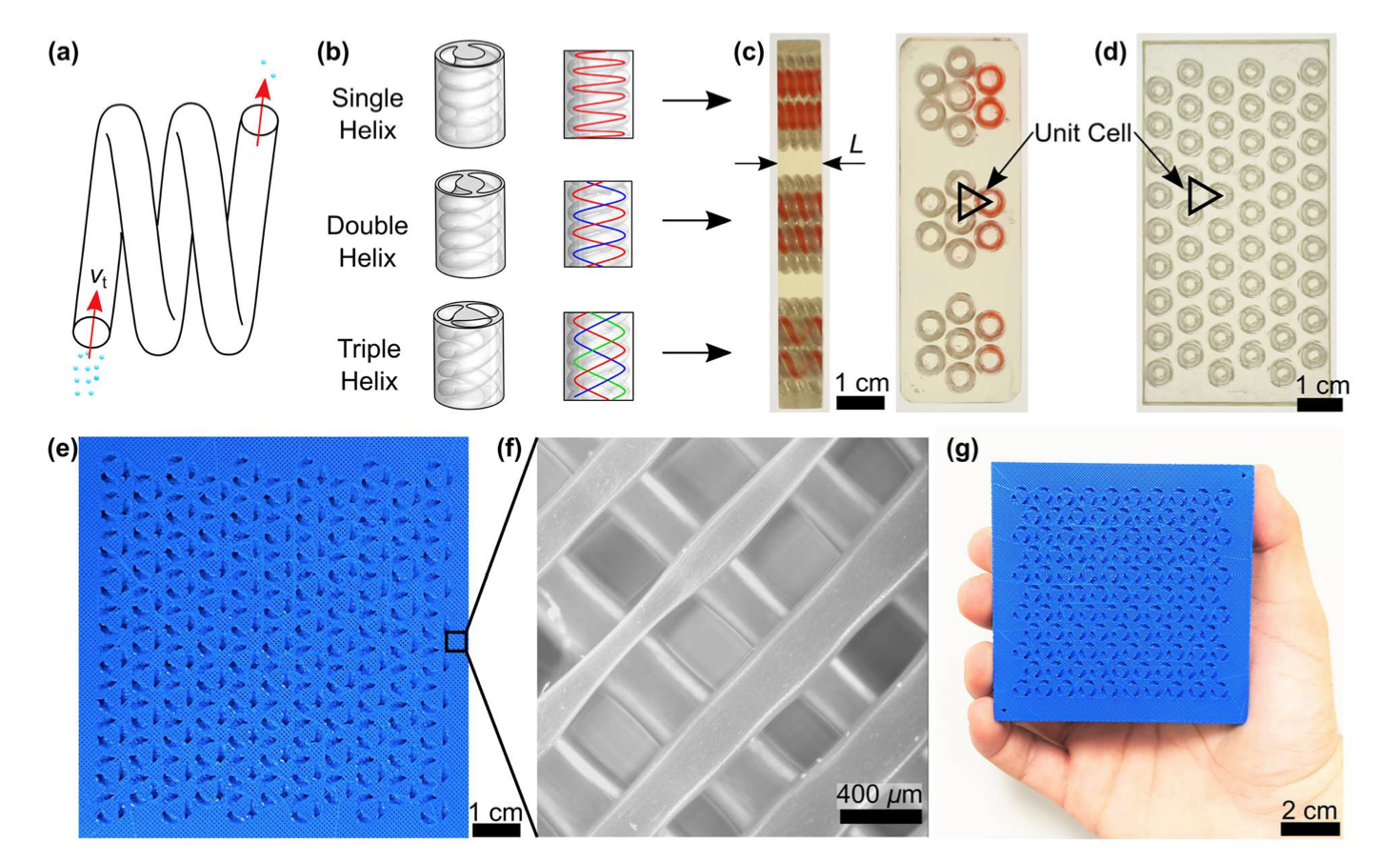Water Filtration and Capture Technology Developed at NEWT-NERC Enables Cost-Efficient Cooling Systems for Buildings and Other Applications
Outcome/Accomplishment
Rawand Rasheed, a Ph.D. Student in Mechanical Engineering at Rice University (RU), developed a water filtration and capture technology that leverages multiplexed inertial coalescence filters to help buildings reduce energy consumption while allowing cooling towers to operate in a more cost-effective way. The work was developed as part of the National Science Foundation (NSF)-funded Nanotechnology Enabled Water Treatment (NEWT) Nanosystems Engineering Research Center (NERC). Rasheed received recognition for this work in being named to the inaugural cohort of Rice Innovation Fellows, and received support to launch Helix Earth Technologies, a commercial venture based on his discoveries.
Impact/Benefits
Air conditioning contributes nearly as much CO2 emissions globally as all current passenger vehicles combined. NEWT-NERC's groundbreaking water filtration and capture solution provides a sustainable, high-speed, high-efficiency solution that slashes energy consumption and carbon dioxide (CO2) emissions from air conditioners by 50 percent, better combating climate change. The commercial product also leverages an add-on approach that avoids costly replacement of existing infrastructure.The technology leverages a patent-pending Multiplexed Inertial Coalescence Refining Apparatus (MICRA) that features low-energy requirements, high-efficiency filtration, and flexible formfactor for integration into architectures for multiple applications. When placed in a droplet-laden airstream, air passes through helical filter channels which remove the droplets from the air stream using the same force that throws a person to one side of a car when taking a sharp turn.
Explanation/Background
A significant challenge to the efficient and reliable design of thermofluidic systems concerns multiphase flows. Both liquid- gas and solid-gas multiphase flows often require capture of liquid droplets and solid particulates for the optimal functioning of many practical system applications. For example, liquid droplets can pose adverse effects on industrial processes, environmental pollution, human health, and pathogen spreading through respiratory droplets spurred by the COVID-19 pandemic. As a result, droplet filtration has gained more attention in recent years.
Rasheed's technology leverages multiplexed inertial coalescence filters composed of parallel helical pathways, designed to capture fine droplets (< 40 μm) through inertial separation while maintaining a low pressure drop (< 400 Pa). NEWT NERC's Dr. Daniel J. Preston oversaw portions of Rasheed's research at the Preston Innovation Laboratory at RU. Rasheed's work received additional support from both NASA and the Department of Energy.
The research team explored filtration efficiencies for 7 μm and 30 μm droplets and characterized them for varying flow conditions, with complete capture observed above a threshold flow rate. Models for filtration efficiency and pressure drop were then developed and validated against experimental results to allow system design and optimization, enabled by the tunable additive manufacturing approach used to fabricate the filters. Filter quality factor values were computed for varying droplet sizes, showcasing exceptional quality factor when compared to state-of-the-art filters documented in the literature.
Rasheed has a patent-pending on the resulting Helix MICRA™ filter, which could find use in applications ranging from dehumidification systems, fog harvesting, chemical reactors, and microgravity droplet capture. The commercial product is being offered by his company, Helix Earth Technologies; additional information can be found at https://www.helixearthtechnologies.com.
Location
Houston, Texaswebsite
Start Year
Energy and Sustainability
Energy, Sustainability, and Infrastructure
Lead Institution
Core Partners
Fact Sheet
Outcome/Accomplishment
Rawand Rasheed, a Ph.D. Student in Mechanical Engineering at Rice University (RU), developed a water filtration and capture technology that leverages multiplexed inertial coalescence filters to help buildings reduce energy consumption while allowing cooling towers to operate in a more cost-effective way. The work was developed as part of the National Science Foundation (NSF)-funded Nanotechnology Enabled Water Treatment (NEWT) Nanosystems Engineering Research Center (NERC). Rasheed received recognition for this work in being named to the inaugural cohort of Rice Innovation Fellows, and received support to launch Helix Earth Technologies, a commercial venture based on his discoveries.
Location
Houston, Texaswebsite
Start Year
Energy and Sustainability
Energy, Sustainability, and Infrastructure
Lead Institution
Core Partners
Fact Sheet
Impact/benefits
Air conditioning contributes nearly as much CO2 emissions globally as all current passenger vehicles combined. NEWT-NERC's groundbreaking water filtration and capture solution provides a sustainable, high-speed, high-efficiency solution that slashes energy consumption and carbon dioxide (CO2) emissions from air conditioners by 50 percent, better combating climate change. The commercial product also leverages an add-on approach that avoids costly replacement of existing infrastructure.The technology leverages a patent-pending Multiplexed Inertial Coalescence Refining Apparatus (MICRA) that features low-energy requirements, high-efficiency filtration, and flexible formfactor for integration into architectures for multiple applications. When placed in a droplet-laden airstream, air passes through helical filter channels which remove the droplets from the air stream using the same force that throws a person to one side of a car when taking a sharp turn.
Explanation/Background
A significant challenge to the efficient and reliable design of thermofluidic systems concerns multiphase flows. Both liquid- gas and solid-gas multiphase flows often require capture of liquid droplets and solid particulates for the optimal functioning of many practical system applications. For example, liquid droplets can pose adverse effects on industrial processes, environmental pollution, human health, and pathogen spreading through respiratory droplets spurred by the COVID-19 pandemic. As a result, droplet filtration has gained more attention in recent years.
Rasheed's technology leverages multiplexed inertial coalescence filters composed of parallel helical pathways, designed to capture fine droplets (< 40 μm) through inertial separation while maintaining a low pressure drop (< 400 Pa). NEWT NERC's Dr. Daniel J. Preston oversaw portions of Rasheed's research at the Preston Innovation Laboratory at RU. Rasheed's work received additional support from both NASA and the Department of Energy.
The research team explored filtration efficiencies for 7 μm and 30 μm droplets and characterized them for varying flow conditions, with complete capture observed above a threshold flow rate. Models for filtration efficiency and pressure drop were then developed and validated against experimental results to allow system design and optimization, enabled by the tunable additive manufacturing approach used to fabricate the filters. Filter quality factor values were computed for varying droplet sizes, showcasing exceptional quality factor when compared to state-of-the-art filters documented in the literature.
Rasheed has a patent-pending on the resulting Helix MICRA™ filter, which could find use in applications ranging from dehumidification systems, fog harvesting, chemical reactors, and microgravity droplet capture. The commercial product is being offered by his company, Helix Earth Technologies; additional information can be found at https://www.helixearthtechnologies.com.

